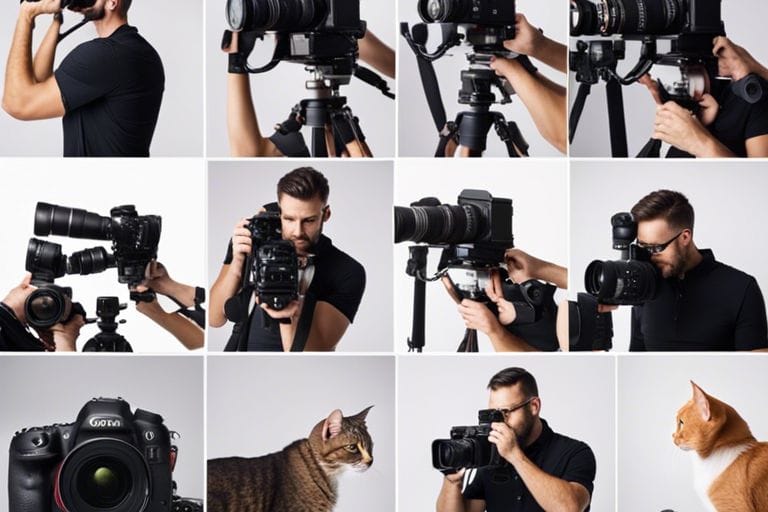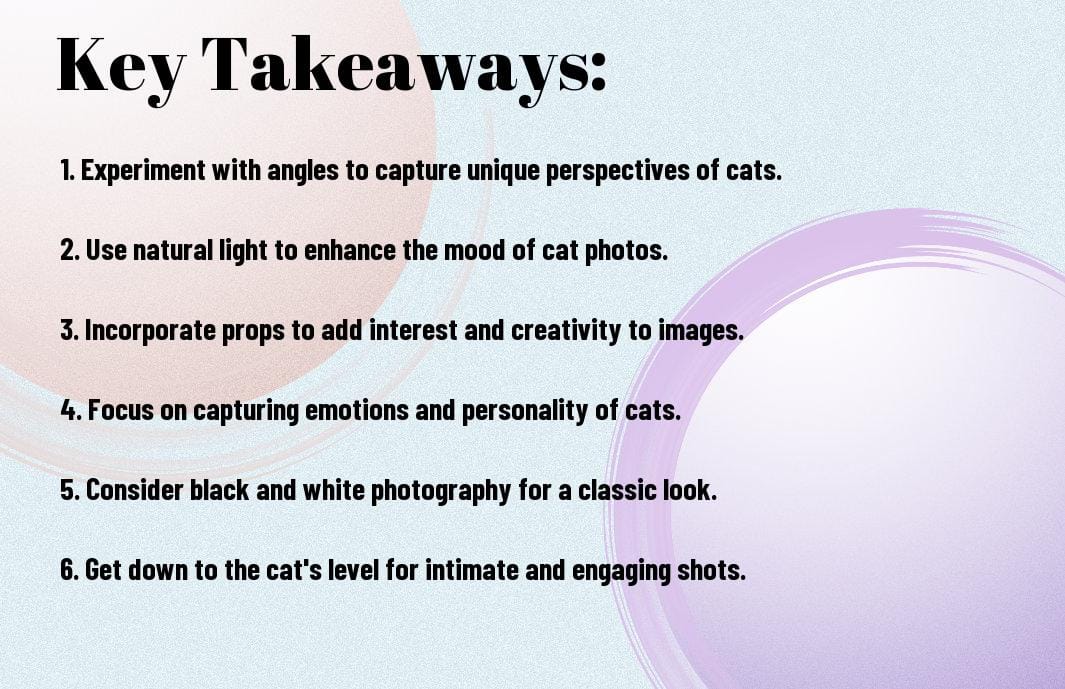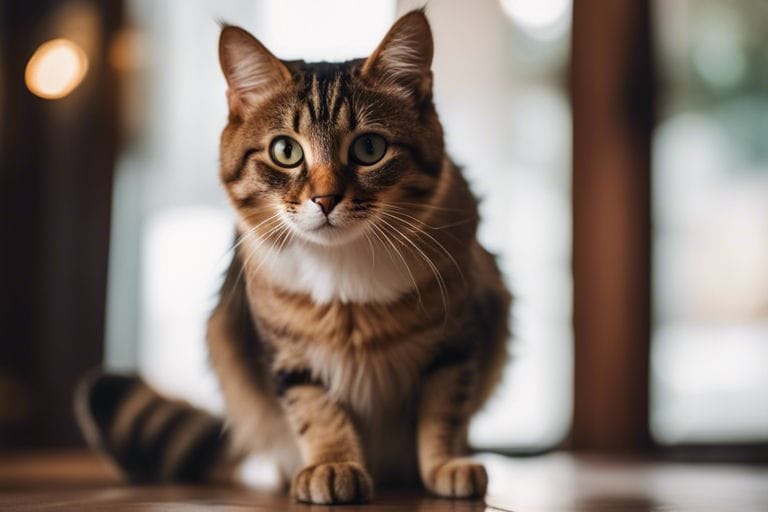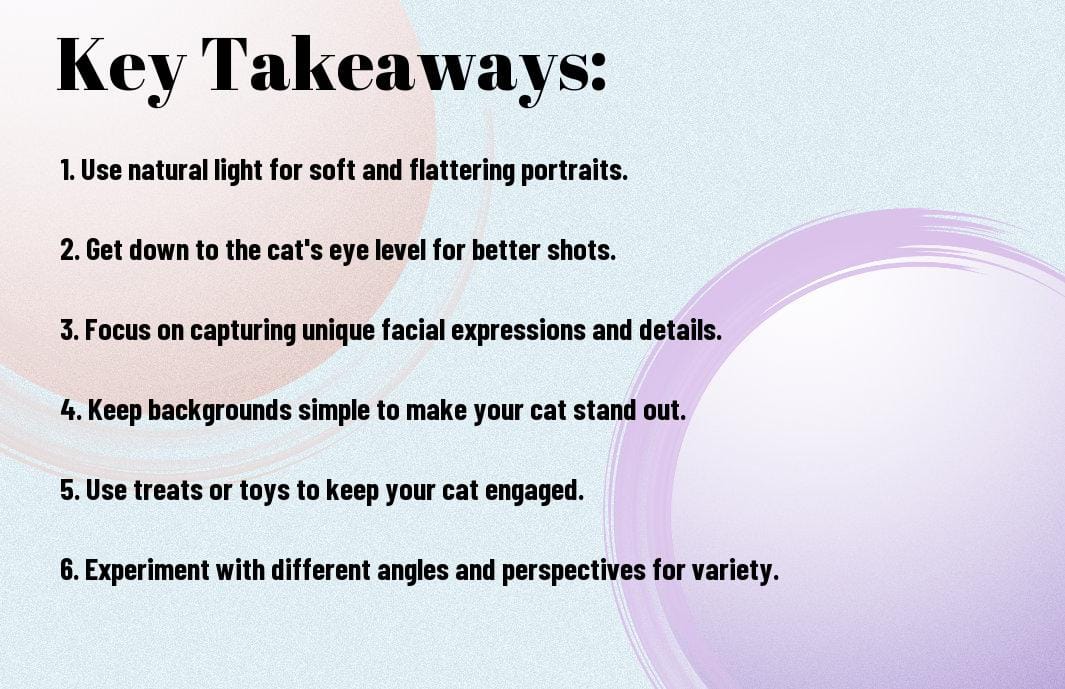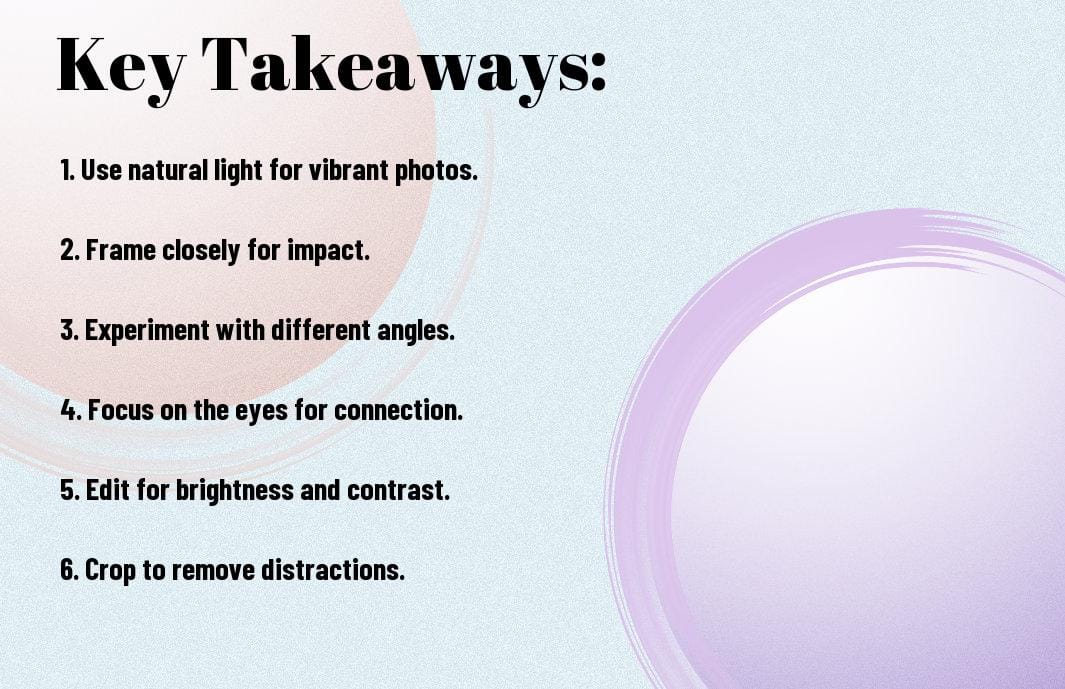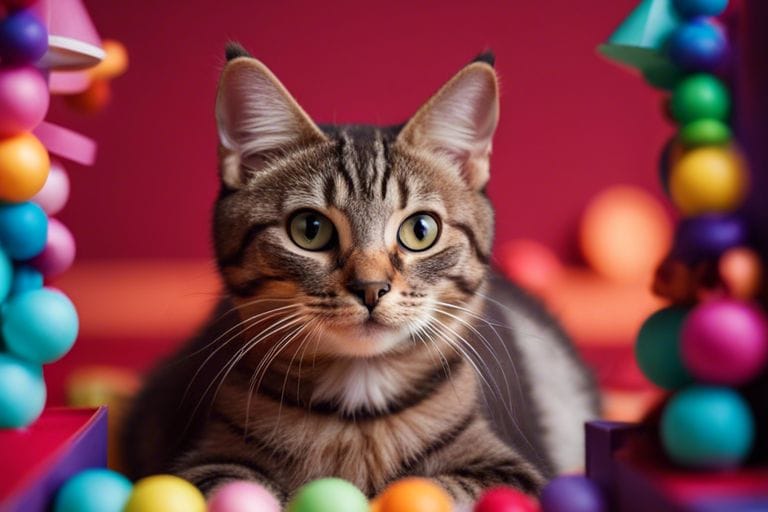There’s nothing quite like capturing the playful and adorable moments of our feline friends through the lens of a camera. But to truly do justice to your cat photography, having the right camera gear is necessary. From capturing the subtle details of their whiskers to freezing their quick movements in action shots, having the best equipment can make a world of difference in the quality of your cat photos.
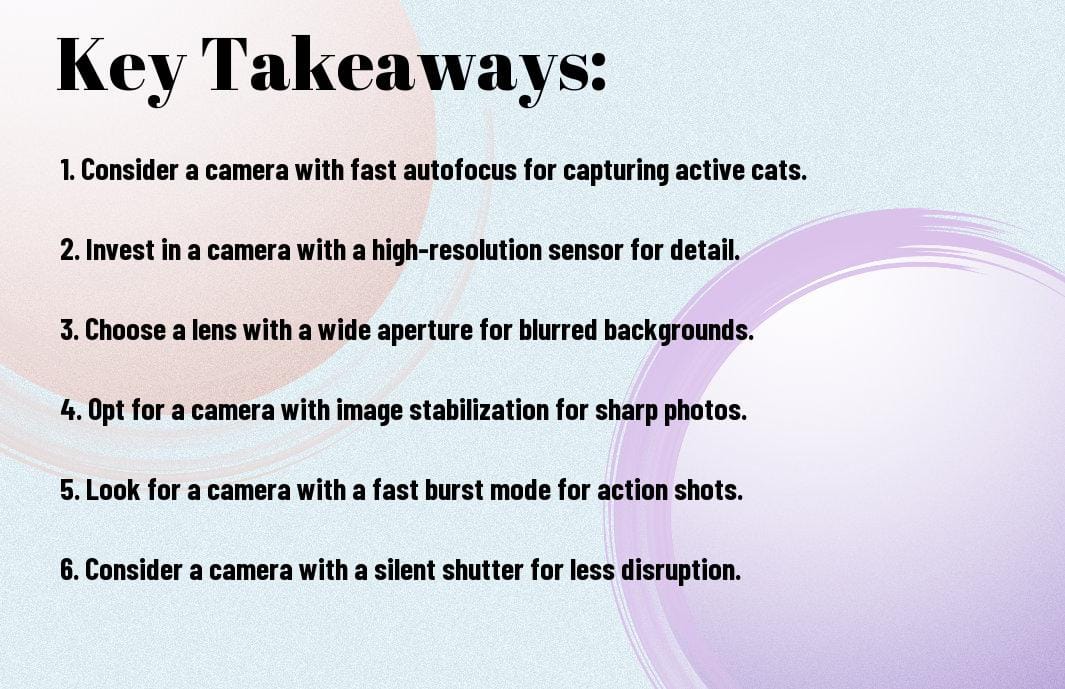

Understanding Cat Behavior and Photography
The
Basic Cat Behavior and How It Influences Photography
Behavior is a crucial aspect to understand when it comes to capturing stunning cat photos. Cats have unique behaviors that can greatly influence the outcome of your photography session. Understanding their body language, reactions to stimuli, and typical behaviors can help you anticipate moments and capture them effectively.
For example, a cat’s tail position can indicate their mood and level of comfort. A twitching tail might suggest agitation, while a relaxed, upright tail could show that the cat is feeling content. Knowing how to interpret these signals can help you adjust your approach and create a more relaxed environment for the cat, leading to better photographs.
Tips for Capturing Cats in Their Natural State
The key to capturing cats in their natural state is to create a comfortable and familiar environment for them. Find a quiet space with good lighting where the cat feels at ease. Avoid sudden movements or loud noises that could startle the cat, causing them to become defensive or hide.
- Avoid direct eye contact with the cat, as this can be perceived as a challenge in cat language.
- Use toys or treats to encourage natural behaviors like playing or grooming, capturing candid moments in the process.
This approach will help you photograph cats authentically, showcasing their unique personalities and behaviors in a natural setting.
Plus, consider using a telephoto lens to capture intimate moments without invading the cat’s personal space. This allows you to observe and photograph cats from a distance, without causing any disturbance. Remember to be patient and observant, allowing the cat to dictate the flow of the photoshoot.
Camera Types for Cat Photography
Clearly, the type of camera you choose for cat photography can greatly impact the quality of your images. There are various camera types to consider, each with its own set of advantages and disadvantages.
DSLR versus Mirrorless Cameras
An important decision to make when choosing a camera for cat photography is whether to opt for a DSLR (Digital Single-Lens Reflex) or a mirrorless camera. Both types have their strengths and weaknesses, so it’s crucial to understand the differences between the two.
This table provides a breakdown of the key features of DSLR and mirrorless cameras:
| DSLR Cameras | Mirrorless Cameras |
|---|---|
| Uses a mirror to reflect light into the optical viewfinder | No mirror, digital display for viewing |
| Generally larger and heavier | Compact and lightweight |
| Good battery life | Shorter battery life |
| Extensive lens compatibility | Limited lens options |
| Fast autofocus performance | Improving autofocus technology |
This comparison can help you determine which type of camera aligns best with your cat photography needs.
Point-and-Shoot Cameras and Smartphones
Camera phones are a popular choice for capturing cat photos due to their convenience and portability. Point-and-shoot cameras are also suitable for those who prefer a simple and easy-to-use option for taking photos.
Photography enthusiasts may find that the limitations of point-and-shoot cameras and smartphones may hinder their ability to achieve professional-quality cat photos. While these devices are great for capturing candid moments, they may not offer the same level of control and image quality as DSLR or mirrorless cameras.
Lenses and Focal Lengths for Feline Portraits
Prime Lenses vs Zoom Lenses
After deciding on the camera body for your cat photography endeavors, the next crucial decision is choosing the right lenses. As far as lenses, one of the first choices you’ll need to make is between prime lenses and zoom lenses. Prime lenses have a fixed focal length, which means you can’t zoom in or out. On the other hand, zoom lenses offer the flexibility of adjusting the focal length without changing lenses.
Best Focal Lengths for Cat Photography
Focal length plays a crucial role in capturing stunning cat portraits. The best focal length for cat photography generally ranges from 50mm to 135mm. A 50mm lens is ideal for capturing detailed close-up shots of your feline friend, while a lens with a focal length of 135mm allows you to capture portraits with a flattering compression effect.
Understanding the characteristics of different focal lengths can help you choose the right lens for the type of cat photography you want to pursue. Wide-angle lenses, such as 24mm or 35mm, can create unique perspectives and show the environment in which your cat lives. However, for classic cat portraits that highlight the feline subject, a medium telephoto lens with a focal length between 85mm and 135mm is often preferred.
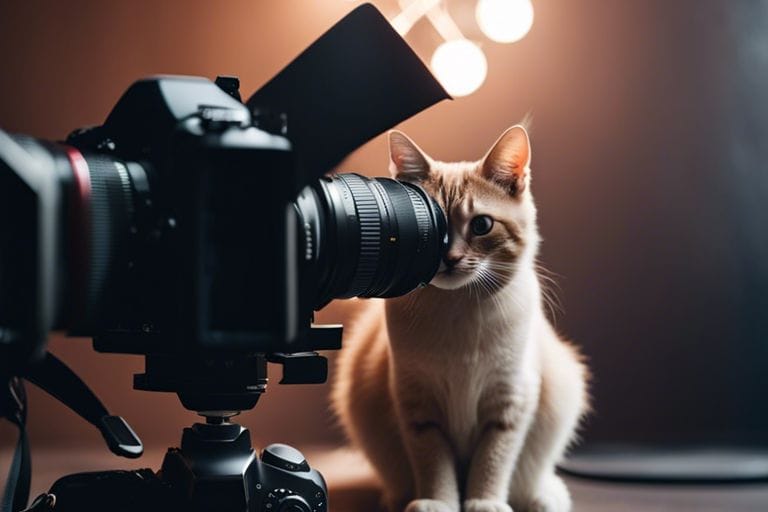
Lighting Essentials for Cat Photos
Natural Light Photography
To capture stunning and natural-looking cat photos, utilizing natural light is key. Natural light provides a soft, flattering glow that can enhance the colors and textures of your feline subject. To make the most of natural light, position your cat near a window or outdoors during the early morning or late afternoon when the light is softer and more directional. Avoid harsh midday sunlight, as it can create unflattering shadows and overexposed areas in your photos.
Artificial Lighting Options
Lighting is crucial when photographing cats indoors or in low-light conditions. Artificial lighting options such as softbox lights, ring lights, or continuous LED panels can help illuminate your feline subject and create a well-lit environment for shooting. Softbox lights create a diffused, even light that minimizes harsh shadows, while ring lights provide a circular light source that can add a unique catchlight to your cat’s eyes. Continuous LED panels are versatile and allow for adjusting the intensity and color temperature of the light to suit your photography needs.
Artificial lighting options provide control over the lighting conditions, allowing you to customize the look and feel of your cat photos. Experimenting with different lighting setups and techniques can help you achieve professional-looking results and highlight the charm and personality of your feline models.
Camera Settings and Techniques
Aperture, Shutter Speed, and ISO Settings
Once again, mastering the vital camera settings of aperture, shutter speed, and ISO is crucial for capturing stunning cat photos. Aperture controls the depth of field, allowing you to blur the background and focus attention on your feline subject. A wider aperture (lower f-number) creates a beautifully blurred background, while a smaller aperture (higher f-number) keeps more of the image in focus.
Composition and Angles for Cat Photography
Once again, for captivating cat photographs, mastering composition and choosing the right angles are key. Techniques such as getting down to their eye level, capturing their unique expressions, or using leading lines to draw focus can make a dramatic difference in the overall appeal of your images. Experimenting with different angles and perspectives can also add interest and creativity to your cat photography.
Composition is about how all the elements in your cat photograph come together to create a visually appealing image. Pay attention to the rule of thirds, framing your cat within the composition, and using negative space to enhance the overall impact of your photos. Keep in mind, practice makes perfect, so keep experimenting with different techniques and settings to find what works best for your cat photography.
The Role of Camera Accessories
Tripods, Monopods, and Stabilization Tools
Many photographers overlook the importance of stabilization tools when it comes to cat photography. Tripods, monopods, and other stabilization tools are crucial for capturing sharp and clear images, especially in low light conditions or when working with active feline subjects. A stable base can make a significant difference in the quality of your cat portraits.
Filters, Reflectors, and Other Enhancements
Reflectors and filters are valuable accessories that can enhance your cat photography. Reflectors can help bounce light onto your subject, reducing harsh shadows and creating a more flattering look. Filters, on the other hand, can be used to add creative effects or improve the overall quality of your images by reducing glare or enhancing colors.
When choosing filters, reflectors, and other enhancements for your camera gear, consider the specific needs of cat photography. A polarizing filter can help reduce reflections off of shiny cat fur, while a diffuser can soften harsh sunlight when shooting outdoors. Experimenting with different accessories can help you achieve the desired look for your cat photos.
Post-Processing for Cat Photography
Editing Software Choices
With the plethora of editing software available in the market, choosing the right one for your cat photography can be a daunting task. There are popular options like Adobe Photoshop and Lightroom, which offer a wide range of tools and features to enhance your cat photos. These software allow you to adjust exposure, contrast, color balance, and even remove any distracting elements from your images.
Basic Editing Techniques for Enhancing Cat Photos
Software like Adobe Photoshop and Lightroom provide basic editing techniques that can significantly enhance your cat photos. You can use tools like crop and straighten to improve composition, adjust brightness and contrast to make your cat’s fur stand out, and use the sharpen tool to add clarity to your images. These simple techniques can make a world of difference in the final outcome of your cat photography.
Choices
Summing up
Hence, when it comes to choosing the best camera gear for cat photography, it’s important to consider your specific needs and budget. Investing in a good quality camera with a fast lens and a reliable autofocus system can help capture those fleeting moments with your feline friends. Additionally, don’t forget to also consider accessories such as a sturdy tripod, extra memory cards, and a comfortable camera strap to enhance your photography experience.
By carefully selecting the right camera gear for your cat photography adventures, you can improve the quality of your photos and create lasting memories of your beloved pets. Remember to do your research, test out different equipment, and practice using your gear to truly unleash your creative potential as a cat photographer.
FAQ
Q: Why is choosing the right camera gear important for cat photography?
A: Choosing the right camera gear is important for cat photography because it can greatly impact the quality of your photos. The right gear can help you capture details, colors and expressions effectively.
Q: What are the necessary camera gear items for cat photography?
A: The necessary camera gear items for cat photography include a DSLR or mirrorless camera, a lens with a focal length suitable for capturing cats at various distances, a tripod for stability, and lighting equipment for well-lit shots.
Q: How can I choose the best lens for cat photography?
A: When choosing a lens for cat photography, consider a prime lens with a wide aperture for capturing sharp details and creating a blurred background effect. A focal length of around 50mm to 85mm is ideal for capturing cats indoors and outdoors.
Q: What factors should I consider when selecting a camera for cat photography?
A: When selecting a camera for cat photography, consider factors such as resolution, autofocus capabilities, low light performance, and flexibility in lens options. Mirrorless cameras are becoming popular for their compact size and advanced features.
Q: How can I improve my cat photography skills with the right camera gear?
A: To improve your cat photography skills with the right camera gear, practice using different settings, experiment with angles and lighting, and learn how to use features like autofocus and manual settings effectively. Investing in quality gear can enhance your photography experience and results.
